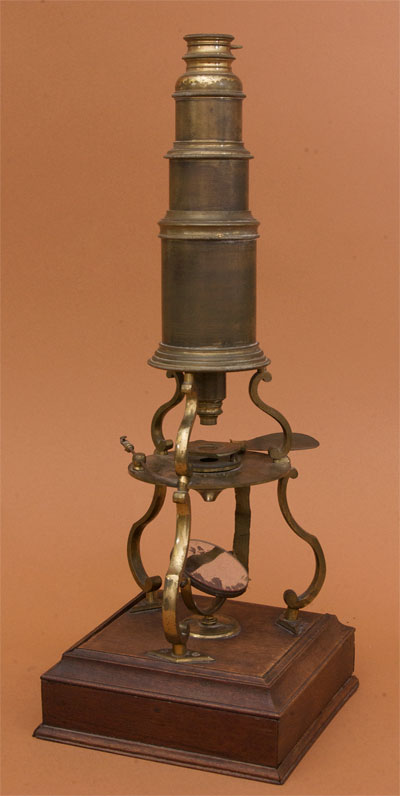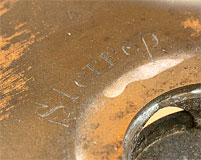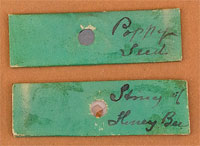 |
|||||
 |
 |
||||
 |
|||||
 |
 |
||||
George Sterrop Tripod Microscope (No. 43 ) |
|||||||||
 |
Age: c1745 Made by: George Sterrop Made in: London |
||||||||
 |
|||||||||
|
Sterrop London fecit
|
|||||||||
 |
|||||||||
|
Samples
|
|||||||||
| This is a Culpeper-Type tripod compound microscope made by George Sterrop of London. George Sterrop (1715–1756) was the son of Thomas and Mary Sterrop. At the age of 15 he apprenticed to his mother in the Spectacle Makers' Company in London. In 1737 he was freed from apprenticeship and joined the firm as a partner, after which the firm became known as "Mary Sterrop & Son." George continued in the instrument business until his death in 1756. Peter Dollond, son of John Dollond (inventor of the achromatic doublet), took over the Sterrop firm in 1767. George Sterrop is well known as the maker of a Cuff-type microscope referenced by Joachim Frederick Mayen (1744), which led to the incorrect attribution of this style to Sterrop. The Golub Collection has a Sterrop microscope that is of the Cuff-style showing the remarkable similarity to Cuff's microscope.
This is a brass tripod microscope patterned after the popular Culpeper Tripod instrument. The body consists of a brass cylinder supported above a flat specimen platform which itself is supported above the centrally mounted gimbaled mirror. The microscope and specimen platform are supported by three curved legs, each of which is square in cross section. The specimen platform has a central hole into which a Bonanni spring stage is fitted. The outer diameter has a keyhole slot for the Fish plate. Remaining with the instrument is an aquatic stage, nine sample slides and a stage forceps. Optics consist of the typical Eye, Field, and Objective lenses. Each is a simple biconvex lens. There are four objective lenses included with this microscope. The microscope assembly sits on top of a mahogany base with drawer. The total height of the instrument is 41cm. An odd note was found in the drawer of the microscope. The Billings and Boerhaave collections have Sterrop tripod microscopes, however they have a different appearance from this instrument in the Golub Collection. |
|||||||||